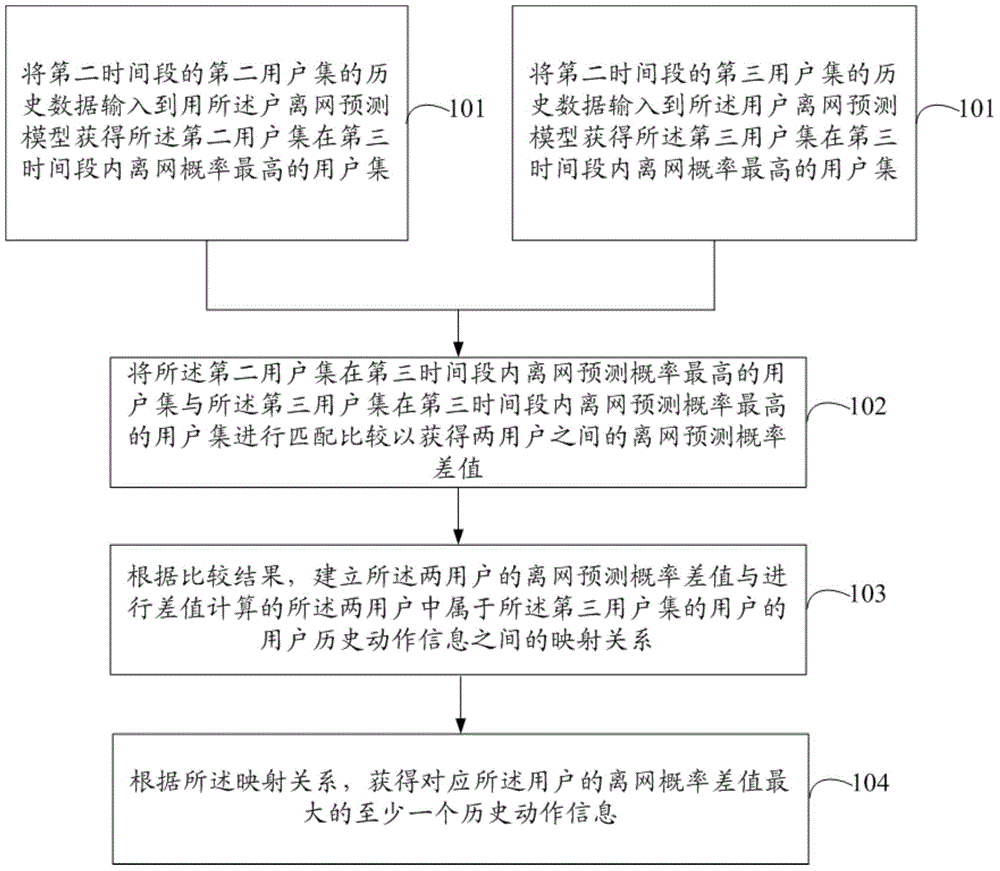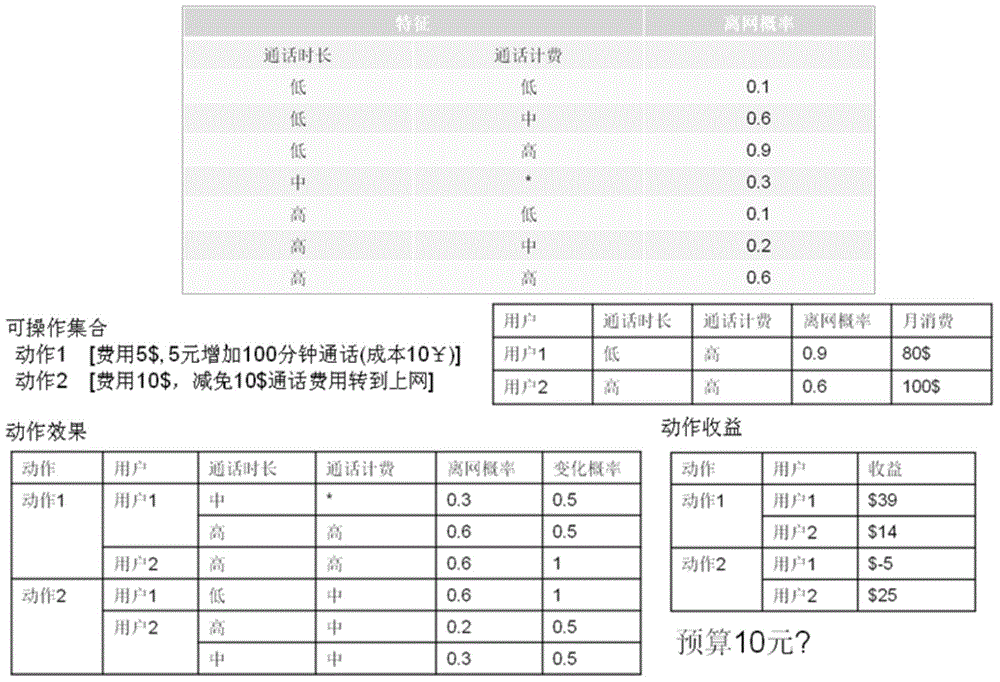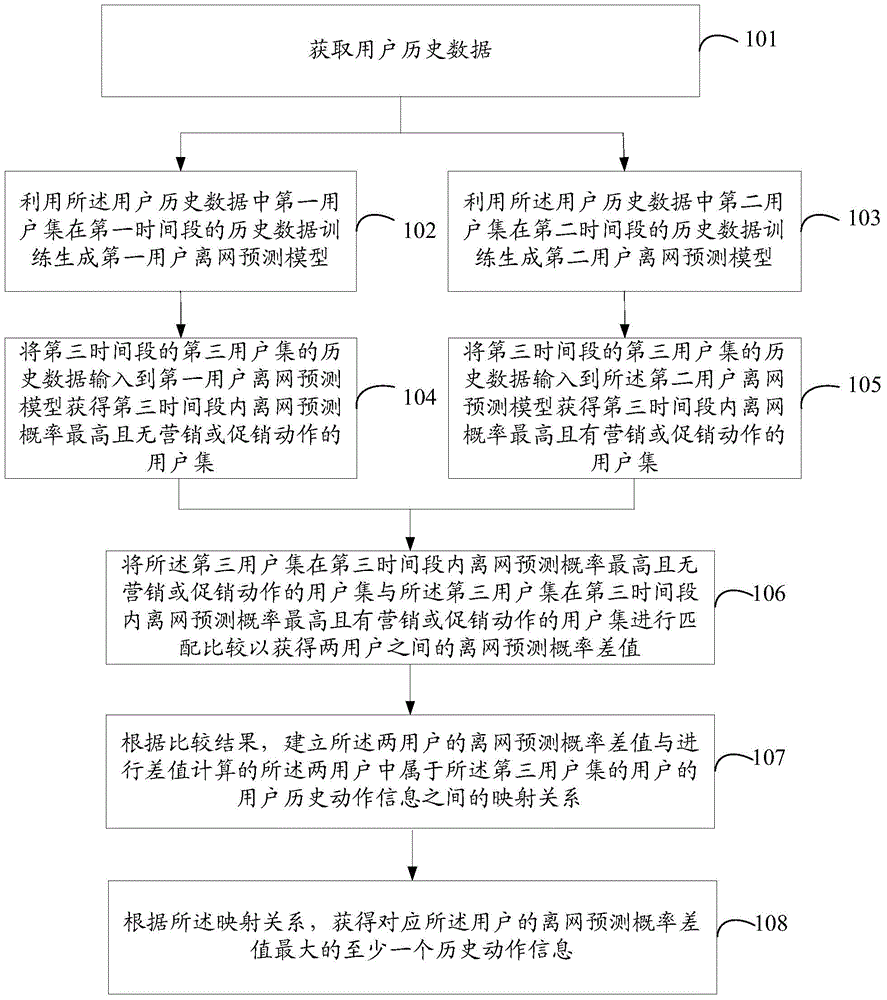Knowledge-space-based behavior result evaluation method and device
A spatial and behavioral technology, applied in the field of data analysis, can solve problems such as difficult to accurately predict results and lack of data support
- Summary
- Abstract
- Description
- Claims
- Application Information
AI Technical Summary
Problems solved by technology
Method used
Image
Examples
Embodiment 1
[0056] Such as figure 1 As shown, a method for evaluating behavioral results based on knowledge space in Embodiment 1 of the present invention, the method includes the following steps:
[0057] Step 101: Obtain the user set with the highest predicted probability of leaving the network within the third time period in the second user concentration and obtain the user set with the highest predicted probability of leaving the network in the third time period in the third user concentration through the user departure prediction model, wherein The third user set includes at least one user who has been subjected to marketing or promotional actions within the second time period, and the second user set includes at least one user who has not been subjected to marketing or promotional actions within the second time period , the user churn prediction model is used to obtain the user churn prediction probability based on user historical data, the user historical data includes user basic i...
Embodiment 2
[0082] Such as image 3 As shown, a knowledge space-based behavior result evaluation method in Embodiment 2 of the present invention includes the following steps:
[0083] Step 101. Obtain user history data, which includes user basic information, user consumption information, user off-net information, and user historical action information, where the historical action information indicates marketing or promotional actions performed on the user;
[0084] Step 102: Using the historical data of the first user set in the user historical data in the first time period to train and generate the first user churn prediction model, the first user set includes users who have not been marketing in the first time period Or at least one user of a promotional action, the first time period is any time period in the past, and the first user churn prediction model is used to obtain the user churn probability based on user historical data except historical action information;
[0085] Step 103:...
Embodiment 3
[0093] Such as Figure 4 As shown, a behavior result evaluation system based on knowledge space in Embodiment 3 of the present invention includes:
[0094] The off-grid predictor is used to use the user historical data to train and generate the user off-grid prediction model and input the historical data of the first time period into the user off-grid prediction model to obtain the highest probability of off-grid prediction in the second time period users, the user history data includes user basic information, user consumption information, user off-net information and user historical action information, the historical action information indicates the marketing or promotional actions implemented on the user, the second time The segment is the next time segment of the first time;
[0095] An action effect evaluator, configured to establish a mapping relationship between the historical action information of the user with the highest predicted probability of leaving the network w...
PUM
 Login to View More
Login to View More Abstract
Description
Claims
Application Information
 Login to View More
Login to View More - Generate Ideas
- Intellectual Property
- Life Sciences
- Materials
- Tech Scout
- Unparalleled Data Quality
- Higher Quality Content
- 60% Fewer Hallucinations
Browse by: Latest US Patents, China's latest patents, Technical Efficacy Thesaurus, Application Domain, Technology Topic, Popular Technical Reports.
© 2025 PatSnap. All rights reserved.Legal|Privacy policy|Modern Slavery Act Transparency Statement|Sitemap|About US| Contact US: help@patsnap.com



